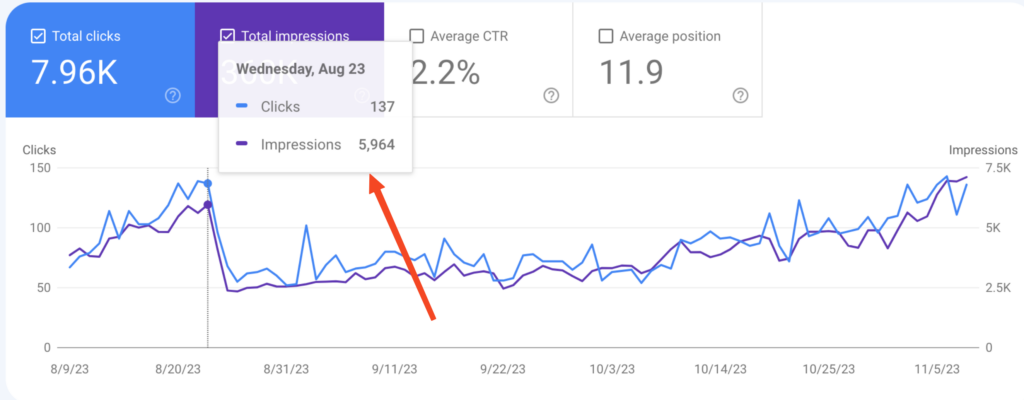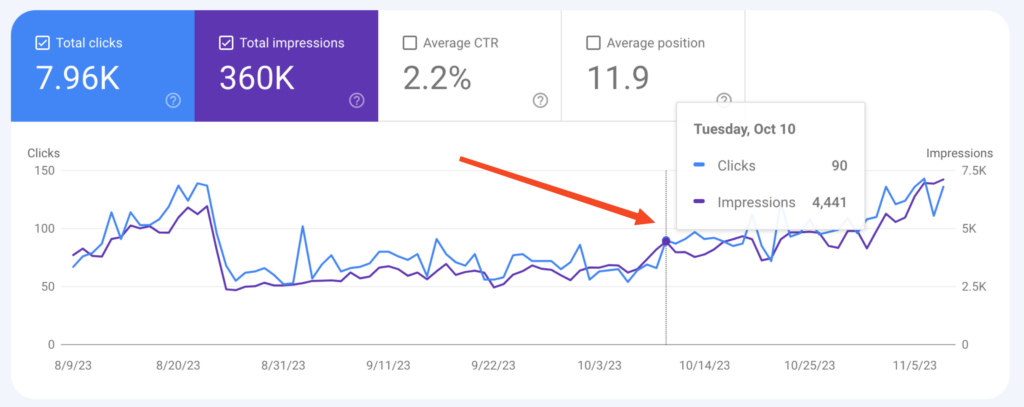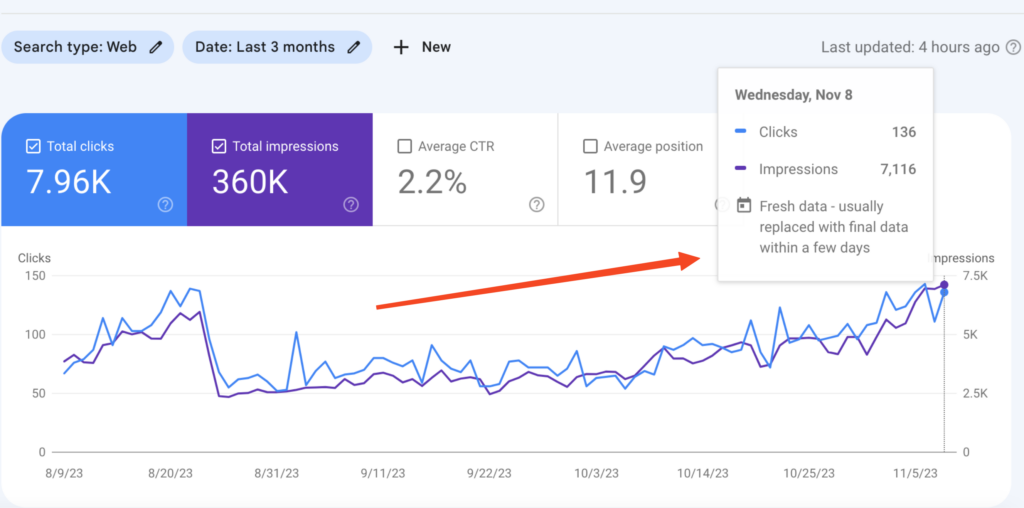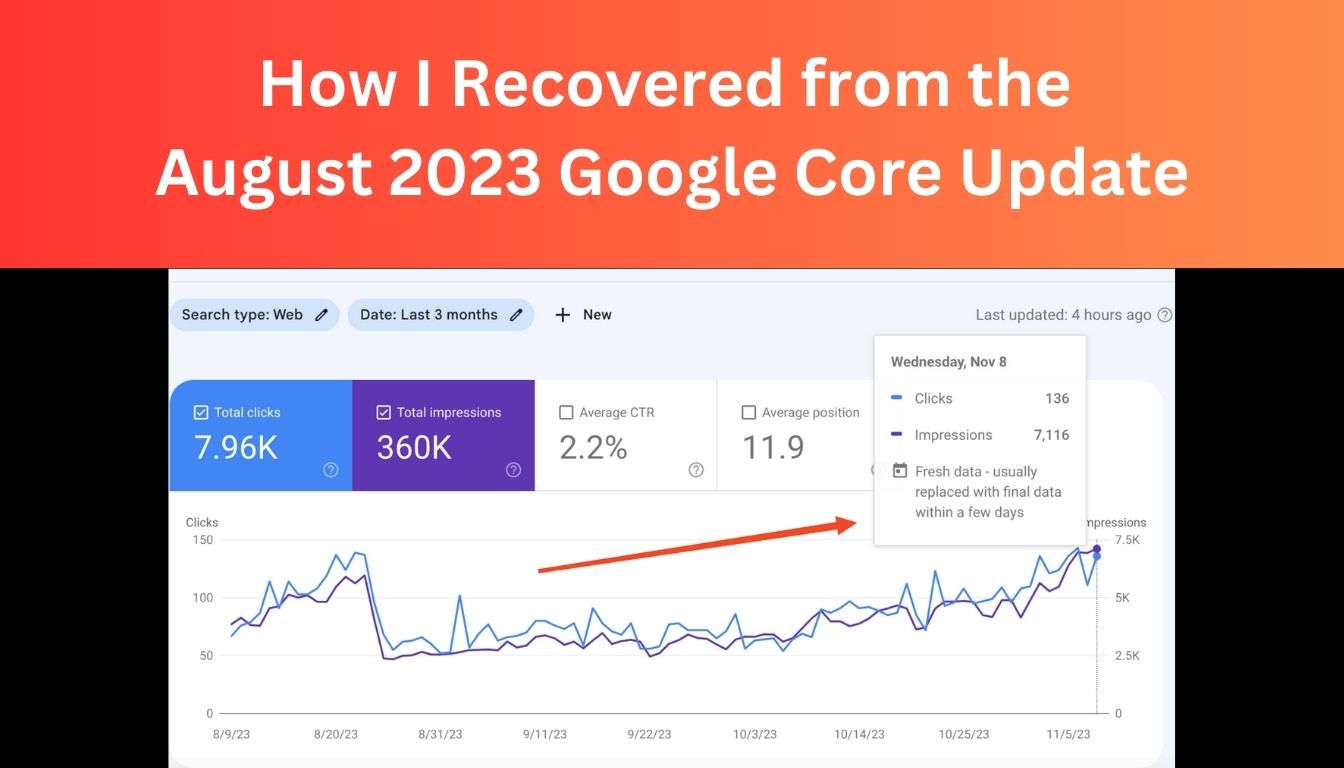How I Recovered from the August 2023 Google Core Update
That fateful morning is seared into my memory. Sitting down at my computer with a hot cup of coffee, ready to start my workday. Clicking over to Google Search Console, expecting the usual traffic report.
But this was no ordinary morning.
The numbers on my screen told a shocking story – traffic had plummeted overnight, down a crushing 60% since just yesterday. The August 2023 Google core update had landed like a kick to the gut.
My hands shook, splashing coffee on my mousepad. How could this happen? Where did all my traffic go?
Panic set in as I scrambled to understand the core update’s implications. But over the coming months, through strategic optimization and persistence, I would claw my way back and recover every last bit of lost traffic.
This is a sort of story of how I overcame the August Google update.
My Story of Traffic Loss
When Google released its core update on August 22, 2023, I immediately noticed a significant drop in traffic to my site.
Before Update:

On August 26th, just four days later, I logged into Google Search Console and saw that my clicks had fallen from 137 to just 55. Impressions were down too, plummeting from 5,964 to 2,382.

As an SEO, I knew this was likely fallout from the latest core update. Google’s algorithms had decided my content was no longer as useful for searchers. I needed to analyze my site and make changes to recover my lost traffic.
Over the next few months, I systematically optimized my content in a number of ways. Here are the steps I took that eventually led me to recover and even surpass my previous traffic levels.
How I Recovered from the Google Update
1. Shortened Long-Form Content
One of the first things I did was go through my site and shorten much of my long-form content. I removed unnecessary fluff and details, shortening articles by 10% to 40%.
This seems to signal to Google that my content is more concise and user-focused. Search engines want to surface content that satisfies search intent as quickly as possible. Trimming the fat helped my pages better match user intent.
2. Optimized for High-Performing Keywords
Next, I dug into Google Search Console to identify keywords that were still performing relatively well. I wrote new articles around these topics to capitalize on existing traffic sources.
For example, I had a post about “on-page SEO” that was still getting clicks. So I wrote a new, more in-depth guide around specific on-page factors like title tags and meta descriptions.
Check out my video on how to find “easy win” keywords in Search Console:
3. Focused on Trending Topics
I realized an important part of recovering lost traffic was to align my content strategy with hot, trending topics spiking in search right now.
For example, OpenAI released GPT-4 Turbo and the DALL-E 3 API on November 6, 2023, which created huge interest in next-gen AI capabilities. If your topic is AI, you could capitalize on these viral new developments.
So you could create posts explaining GPT-4 Turbo’s increased context window, the new Assistants API, Functions, Code Interpreter, Retrieval, Custom GPT, and an overview of DALL-E 3’s image generation capabilities.
Writing timely content about brand-new, trending releases helps catch the rising search wave. Google rewards sites that provide comprehensive information on trendy topics users are searching for now.
4. Focused on Quality over Optimization Scores
Previously I used tools like Surfer, NEURONwriter, and Frase to analyze top search results and cram extracted keywords into my content. The goal was to increase optimization scores.
However, I found this distracted the AI from writing quality content from a natural point of view.
So I stopped using these overseer tools. Instead, I worked directly with my AI assistant, giving it creative freedom to think and write informative content in its own voice.
The content focused on quality information and natural phrasing, not awkwardly shoved in keywords. As Google’s algorithms advance, they favor this type of helpful, natural content over optimization scores.
Disclaimer: I do not discourage you from using the tools I mentioned. I was simply describing the results I personally saw when optimizing content with these tools. Don’t get me wrong – you may find great success using them. I only share my own experience, not universally discouraging their use. Your experience may differ.
5. Improved E-E-A-T (Expertise, Experience, Authoritativeness, Trustworthiness)
The most impactful change was improving my site’s E-E-A-T, which Google’s quality raters look for.
E-E-A-T stands for:
- Expertise
- Experience
- Authoritativeness
- Trustworthiness
It’s difficult to be an expert in all niche topics as an SEO. I run sites on a wide array of topics.
I faced the challenge of establishing credibility across diverse topics.
Luckily, I worked with a client who was passionate about a particular niche. He let me use real details – like his name, photo, bio, and social media.
I implemented proper author schema markup to highlight expertise using the tool called SERPRisr Author Schema Generator:
SERPRisr Author Schema Generator
This author gave my content more authority and trustworthiness.
Check out my YouTube video on implementing author markup:
Tracking Progress and Recovery
After making significant changes to my site, I kept a close eye on Google Search Console to monitor my progress.
Google rolled out another core update on October 5, 2023.
By October 10th I noticed a slight improvement in clicks and impressions.

I continued optimizing my content and tracking KPIs. Google hit us with yet another core update on November 2nd.
On November 8th, six days after that update, my Search Console showed clicks bouncing back up to 136, with impressions up to 7,116. My traffic had recovered and then some!

My strategy of shortening content, optimizing for high-performing keywords, creating trending and evergreen content, focusing on quality over-optimization, and improving E-E-A-T proved successful. I recovered from the August core update and have seen continued growth since.
Key Takeaways from My Recovery Experience
Here are the main tips I learned from overcoming the August 2023 core update penalty:
- Concise, user-focused content – Trim the fluff, and shorten content to better match user intent
- Optimize for high-performing keywords – Double down on topics still getting traffic
- Trending Content – Stay on top of current trends to keep content relevant.
- Focused on Quality over Optimization Scores – I worked directly with my AI assistant, Providing rich information naturally, not forced keywords.
- Improve E-E-A-T – Getting true subject matter experts involved improves trust and authority
- Monitor progress in Search Console – Use data to track the effectiveness of optimization efforts
It was a challenging few months of optimizing and monitoring my site after the core update. However, staying persistent and focusing on quality led to an eventual recovery and growth.
Hopefully, my experience gives you some insights into overcoming Google algorithm updates! Let me know if you have any other questions.

